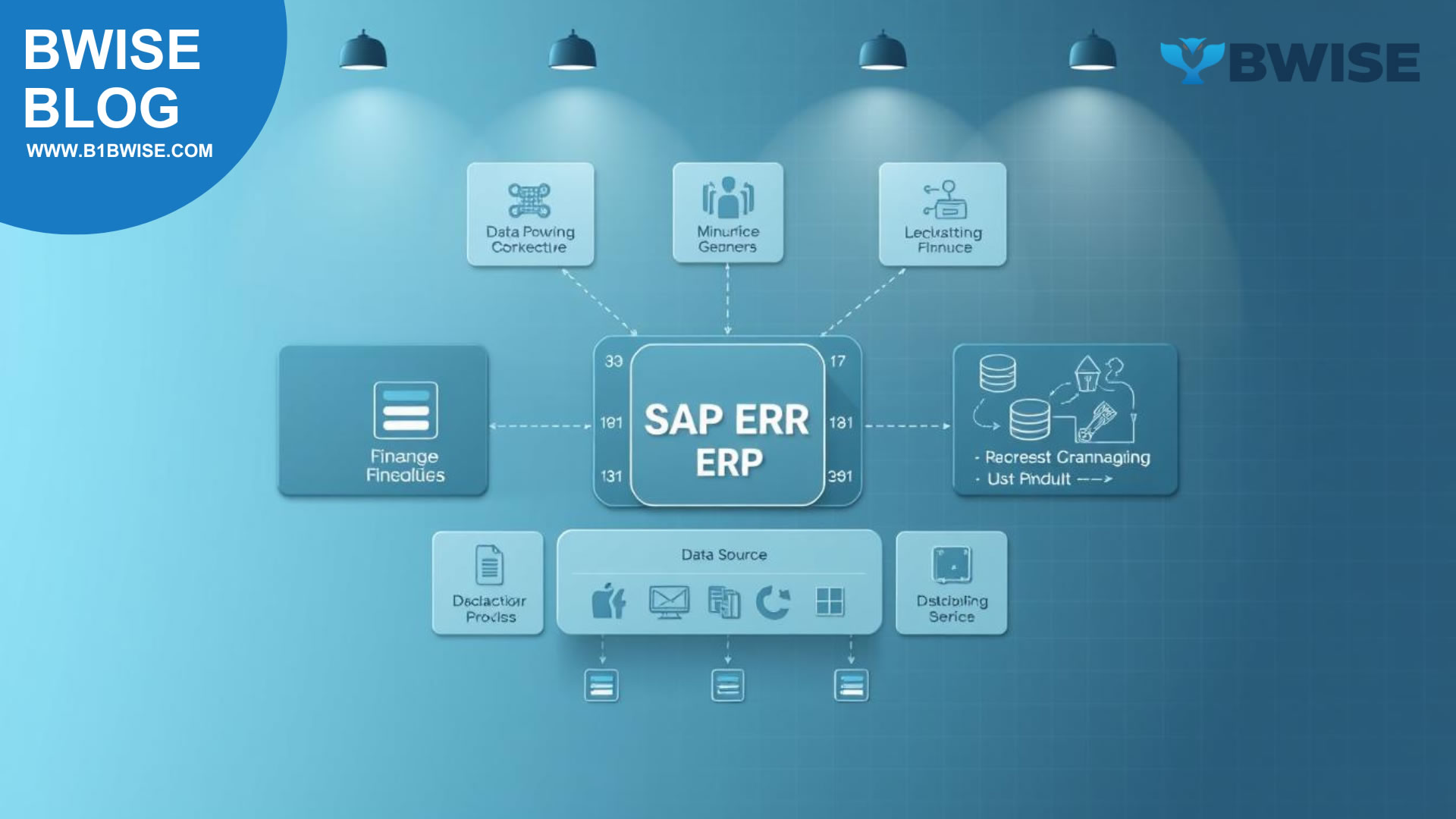The SAP ERP program is a top choice for managing business operations. It uses integrated software to handle finance, supply chain, and HR tasks. This way, it shares data in real-time, making businesses more efficient.
Companies use SAP ERP to streamline their work and make quicker, smarter decisions. It helps them focus on growth by aligning strategy with business goals.
Since the 1980s, SAP has become a global standard. It supports businesses of all sizes with tools for growth. SAP ERP helps track inventory and improve customer service, reducing errors.

Key Takeaways
- SAP ERP program unites business processes into a single, user-friendly system.
- SAP enterprise resource planning improves accuracy by connecting departments and data.
- Used by organizations worldwide, SAP software scales with business growth.
- Its 40+ year history makes it a trusted tool for modern digital transformation.
- Adoption simplifies complex tasks like inventory management and financial reporting.
Understanding the SAP ERP Program Fundamentals
The SAP ERP program has a layered architecture for flexibility. It has a database layer, an application layer, and a presentation layer. This setup lets businesses customize modules while keeping systems connected.
Since its start with R/3, SAP has grown to meet today’s needs. The move to S/4HANA shows this growth, making real-time analytics and cloud readiness easier. Each update keeps the platform ready for new market demands.
Process integration is a vital process as it ties together the finance, the supply chain, and the HR into one system. In other words, updated sales data automatically leads to updated inventory records, hence a reduction in errors. This integration platform provides information that would otherwise be flying around, therefore it is beneficial for decision making and problem-solving, into useful insights.
Companies using SAP ERP get a scalable base. It works for small teams or big global operations, thanks to its modular design. Knowing these basics helps unlock SAP’s power to align tech with business goals.
Key Benefits of Implementing SAP ERP for Your Business
Streamlining operations is key to success. SAP enterprise resource planning automates tasks like invoicing and procurement. This frees teams to focus on growth.
With standardized workflows, departments like finance, HR, and supply chain work together smoothly. This reduces errors and delays.
Real-time analytics help leaders make quicker decisions. SAP ERP’s reporting tools turn data into insights. This shows trends in sales or inventory.
Companies like a major US retailer used these tools to cut stockouts by 30%. This boosted customer satisfaction.
The savings come from optimized processes. The integrations of SAP here helped one of the client auto-makers to lower inventory costs by 15%. The first is the cycles of orders-to-cash that are now of shorter durations and the second is the reduced IT maintenance expenses also.
These results show how SAP ERP turns data into dollars. It’s a smart investment for any business.
Having a unified system gives you a competitive edge. SAP ERP integrates with existing software like CRM platforms. This creates a single data source.
This clarity helps businesses respond fast to market changes. It ensures they stay ahead of rivals.
SAP ERP Modules and Their Functions
SAP software has special tools in each module, each for a different business area. These modules work together to make a system that fits your company’s needs. Let’s see how each part helps your operations.
Financial modules like General Ledger and Accounts Payable handle money matters. They track expenses, manage invoices, and create reports. This gives a clear view of your finances.
For example, Accounts Receivable makes sure customer payments are smooth. This keeps your cash flow healthy.
Supply chain modules enhance stock keeping and logistics efficiency. Materials Management follows the inventory levels. Warehouse Management increases storage efficiency. Transportation Management substitutes and manages deliveries (shipments) properly.
Together, these features reduce waste and speed up orders.
HR modules like Personnel Administration and Talent Management make hiring, payroll, and staff development easier. Time Management tracks employee hours, reducing mistakes. Companies use these tools to automate tasks like leave requests or onboarding new hires.
Each module in SAP solutions can be customized. Businesses choose the ones that solve their specific problems. Whether it’s improving finances, streamlining logistics, or managing teams, these modules help drive growth and efficiency.
Step-by-Step SAP Implementation Process
Starting SAP implementation needs clear steps to avoid confusion. Begin with a pre-implementation audit. Check your current workflows, set goals, and match them with SAP features. A dedicated team should include IT experts, department leads, and external consultants. Planning is key for smooth sap project management.
Next, design your system. Customize modules to fit your business needs. Configure settings, migrate data, and test thoroughly. Regular check-ins during sap implementation keep the project on track. Use agile methodologies to adjust as needed. Training sessions for users reduce resistance and errors.
Go-live day marks the start of real-world use. Monitor performance closely. Address issues quickly to maintain trust. Post-launch support includes refining workflows and providing ongoing training. Document everything for future reference.
Key tips: Prioritize communication between teams. Allocate realistic timelines—most implementations take 6–18 months. Budget for unexpected challenges. Partner with certified consultants for complex processes. Stay flexible but stay focused on your initial goals.

Common Challenges and Solutions in SAP ERP Adoption
Successful sap implementation faces technical hurdles like data migration and integrating old systems. Errors in data migration can mess up workflows. But, using phased approaches and validation tools can reduce these risks.
Slow integration with outdated systems can slow things down. Middleware solutions help by making old and new systems work together. Regular audits and server optimization keep things running smoothly, even during busy times.
People can also be a challenge. Teams might resist change, slowing sap project management. But, clear training and open communication can build confidence.
Early adopters can become champions for the new system. They encourage others to use it. Leaders who share updates openly help everyone feel more confident and involved.
Budget and timeline overruns often come from adding too much too soon. It’s important to focus on the most important features first. Having a contingency budget and planning in an agile way helps adapt to changes.
Real examples show how strict change control can cut delays by 30%. Teams that manage sap project management well track progress weekly to stay on track.
Every challenge has a solution. Working with certified consultants ensures you’re following best practices. They help balance new ideas with what’s realistic, turning challenges into chances for smoother transitions.
Maximizing ROI Through SAP Consulting Services and Training
Getting the most out of SAP ERP is more than just installing it. Businesses do best when they get expert advice and keep learning. Top sap consulting services offer custom plans to match software with company goals. They find and fix gaps, making sure the setup is right for your industry.
Choosing the right consultant is key. Look at their tech skills, client success stories, and support after setup. Choose firms with certifications and experience in your field. Training, like sap training workshops, helps teams use SAP to its fullest. Microlearning and simulations make users more confident and reduce mistakes.
Watch your ROI by checking KPIs like faster cycles, better inventory, and cost cuts from automation. Regular checks with consultants show where to improve. Keep training to stay up-to-date with SAP’s new features.
Companies like Siemens and Coca-Cola saw a 25-40% boost in efficiency with the right consulting and training. Treating SAP as a strategic asset, not just software, is the goal. Begin by checking where you’re falling short and what you need from your partners.
Future Trends in SAP Solutions and Integration
Enterprise technology is always changing, and SAP is at the forefront. Companies using SAP integration can tap into future innovations right now. SAP S/4HANA is changing the game with real-time analytics, thanks to in-memory computing and streamlined data models.
This combination helps businesses make decisions faster. It lets them quickly respond to changes in the market.
Cloud-based SAP services are making it easier to access scalable, affordable systems. Now, businesses can easily move between on-premise and cloud setups. This flexibility is great for growing or during busy times.
Cloud-native apps like SAP Cloud Platform make integrating with other tools easier. This keeps systems flexible and adaptable.
Artificial intelligence and machine learning are key to SAP’s future. New tools use predictive analytics to spot supply chain issues or customer needs. For example, AI dashboards in SAP highlight risks and chances automatically.
As these technologies improve, businesses will see more automation in finance, logistics, and customer service.
To get ready for these changes, explore SAP’s newest modules and partner networks. Companies that invest in training and flexible IT strategies will stay ahead. The future of SAP integration is about building a strong base for smarter, data-driven growth.
Conclusion: Transforming Your Business with SAP ERP
SAP software is a powerful tool for making your business better. It makes processes smoother and helps your business grow. By using it, you get real-time insights, save money, and find solutions that fit your industry.
Starting your journey with SAP means planning carefully. You need to know what your business needs and how to use the software. SAP training helps your team learn and use the system well.
Investing in SAP ERP means your business can adapt and grow over time. Begin by trying it out, attending webinars, or talking to certified partners. Being proactive with SAP can make your business more efficient and innovative.
